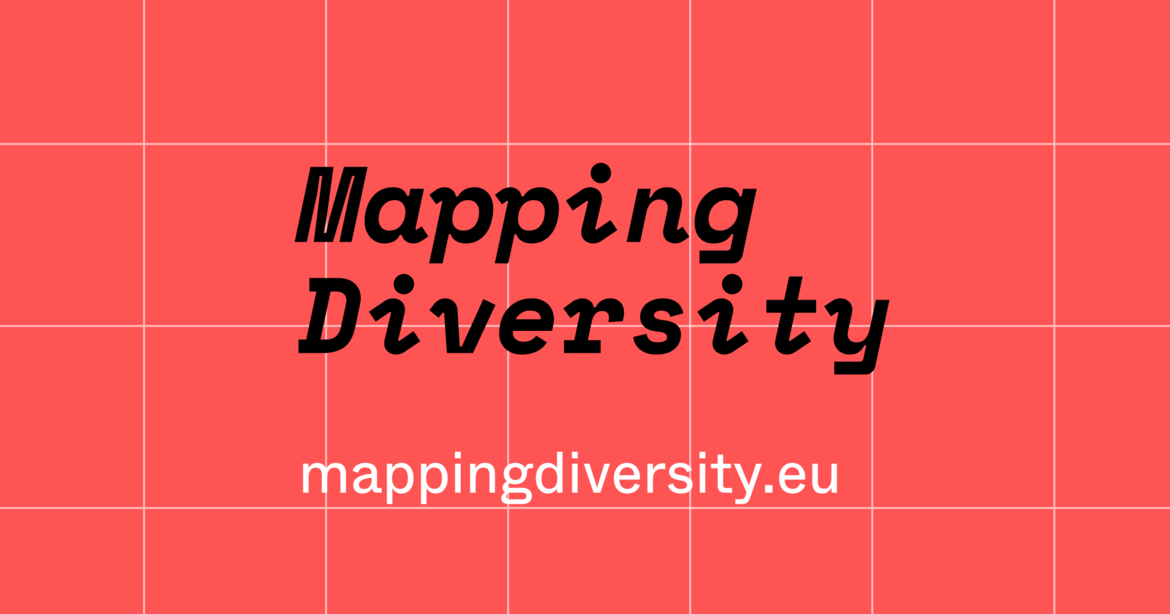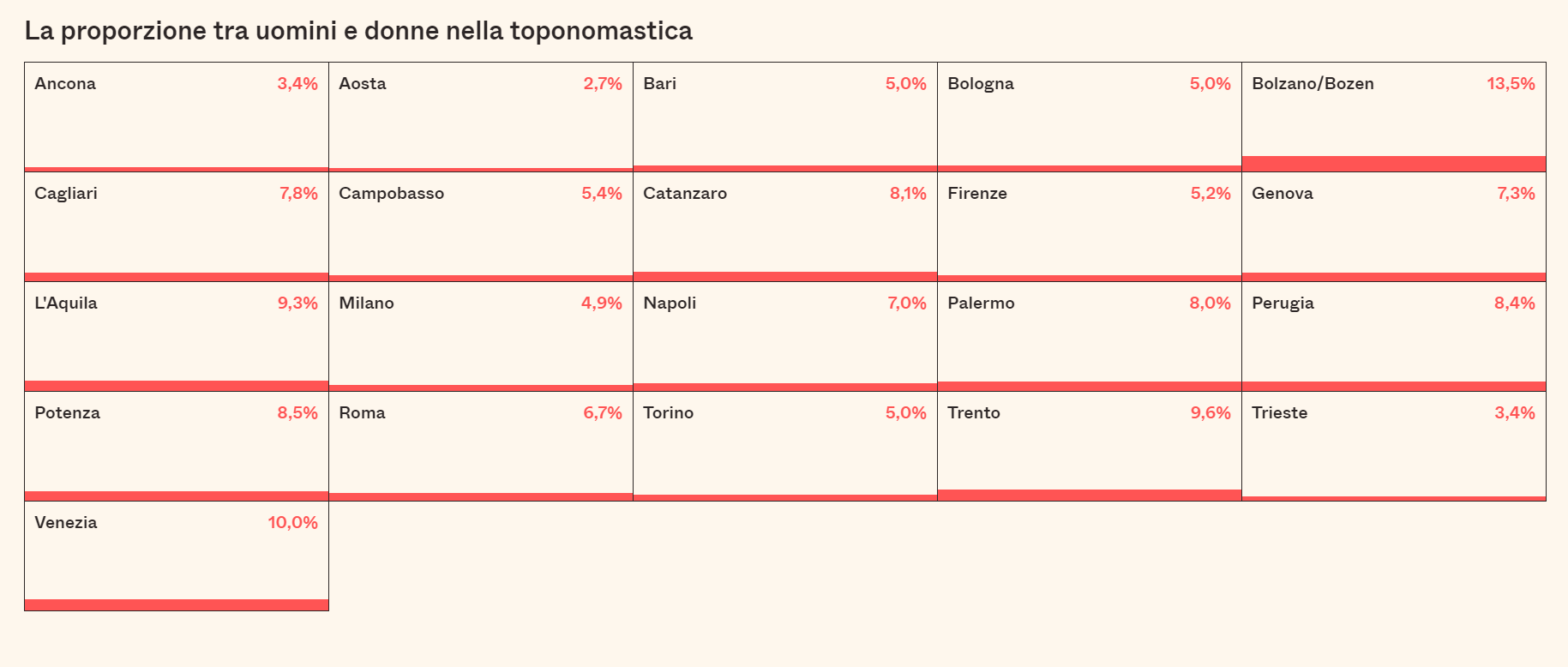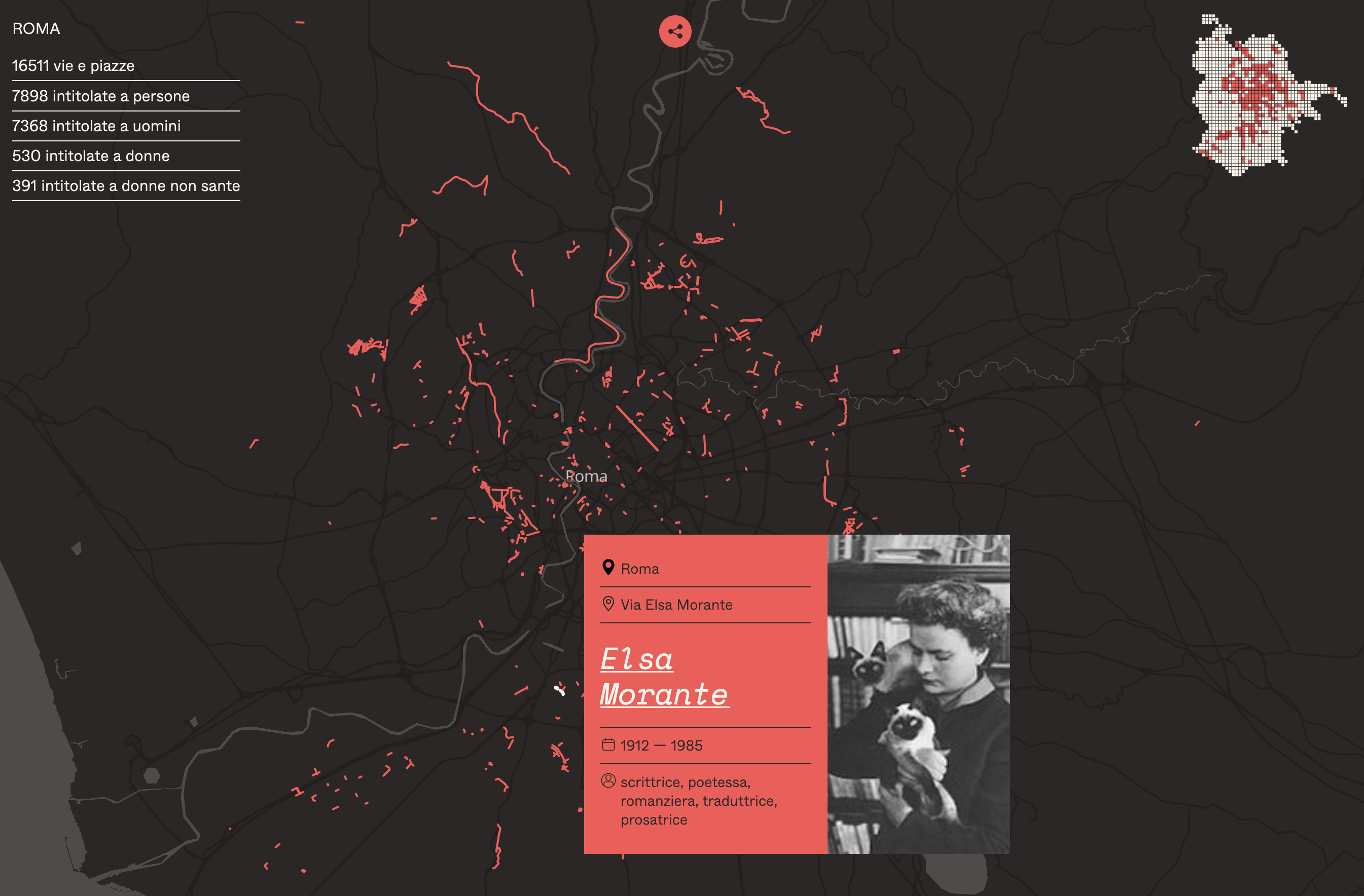Mapping Diversity: the gender gap in Italian toponyms
A pilot project analysing the gender ratio in street names in Italy's 21 regional capitals. The idea is to replicate similar analyses for other countries or topics related to street names in the future.

None
Mapping Diversity: the gender gap in Italian toponyms
A pilot project analysing the gender ratio in street names in Italy’s 21 regional capitals. The idea is to replicate similar analyses for other countries or topics related to street names in the future.
The project Mapping Diversity highlights the fact that in Italy many more streets are dedicated to men than to women. The analysis required checking about 40,000 street names and developing custom solutions, with a mix of automation and manual checks.
Out of 24,625 streets named after persons in the 21 Italian regional capitals, only 1629 (6.6%) are named after a woman. Of these 1629 streets, 41% are dedicated to Catholic saints and other religious figures.
Admittedly, changing the way we name streets is not enough to live in a more equal society. But we can’t help asking ourselves which stereotypes and collective imagery are perpetrated by such disparities. The fight for equity in toponyms is a cultural and symbolic one, and tells a story about who is visible in our societies, and who is, instead, stays behind.
The project makes it also possible to explore the 21 Italian regional capitals with a scrollytelling interactive format and see how many streets are named after women, who were these personalities, and where these streets are located:
The data used to carry out the project was collected from open sources built through crowdsourcing, such as OpenStreetMap and Wikidata . We matched OpenStreetMap names to Wikidata by name, in order to collect not only their gender, but also when they were born, their profession, etc. Finally we manually checked and fixed the automatic matching of street names and individuals got wrong among the total 40,000 streets analyzed. Here you can find a thorough methodological note that describes the process.
https://mappingdiversity.eu/


